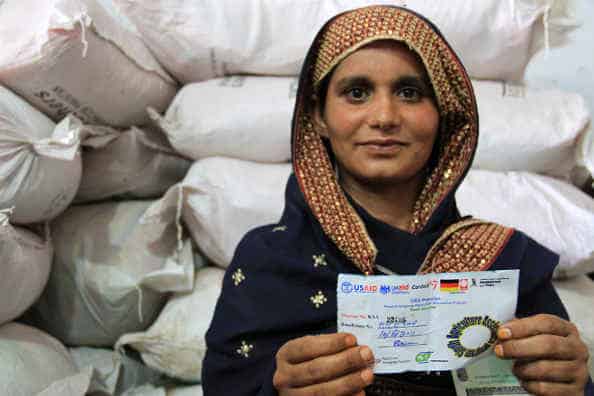A recent report from the International Food Policy Research Institute (IFPRI) finds that giving low-income and hungry people money or food vouchers is often more effective in improving nutrition than directly giving them food.
For six months, IFPRI researchers looked at various urban households in Ecuador to evaluate the cost efficiency and nutritional effects of three common food assistance methods: cash transfers, food vouchers, and food baskets. Each month, households received US$40 worth of assistance in one of these forms. According to the report, food baskets were least cost-effective. The costs of storing, transporting, and distributing the food made implementing this method nearly four times more expensive than the other options. Furthermore, food basket recipients usually had to pay for taxis to transport the heavy food packages home, which made their out-of-pocket costs the highest of all the beneficiaries.
The costs of implementing and acquiring cash transfers and food vouchers were similar, but how the beneficiaries used the assistance varied greatly. While families receiving food vouchers used almost all (98.8 percent) of their vouchers for buying food, families receiving cash spent only 83 percent of it on food. The rest went to nonfood expenses, savings, or other households.
Although all three types of nutrition assistance improved the quality and quantity of food available to hungry people, each method had a unique nutritional impact. Recipients of food baskets usually ate more calories, but those who received cash or vouchers had a more diverse diet. The IFPRI report identifies vouchers as the most cost-effective option for increasing nutrition, but also the most stigmatized and least preferred method among recipients. Cash was by far the most preferred because it gave beneficiaries the most freedom in deciding what kind of food to eat and how to spend the money.
Organizations such as the United Nations World Food Programme (UNWFP) and Feeding America recognize the importance of giving people a choice in what they eat. The UNWFP is distributing more and more cash and food vouchers instead of food because it believes that these methods boost local economies and empower people. Just last year it launched a cash-based assistance program in Burkina Faso.
Feeding America believes that giving people a choice in what they eat is important in creating hope. Some of its member food banks, such as Food Finders Food Bank in Indiana, give clients more autonomy by ditching pre-made food baskets in favor of systems based on points. Many food banks are even set up like grocery stores to make people feel more comfortable in accepting food assistance.






